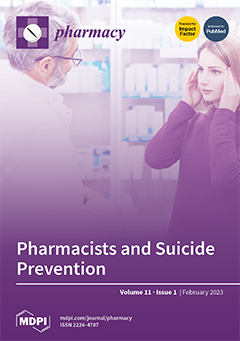(1) Background: Hyperphosphatemia is correlated with an increased rate of mortality and morbidity due to cardiovascular diseases in chronic kidney disease (CKD) patients. It can be improved by restricting dietary intake of phosphate and oral phosphate binders, such as lanthanum carbonate and sevelamer
[...] Read more.
(1) Background: Hyperphosphatemia is correlated with an increased rate of mortality and morbidity due to cardiovascular diseases in chronic kidney disease (CKD) patients. It can be improved by restricting dietary intake of phosphate and oral phosphate binders, such as lanthanum carbonate and sevelamer carbonate. (2) Objective: To evaluate the clinical efficacy of sevelamer carbonate in comparison to lanthanum carbonate as phosphate binders for the treatment of hyperphosphatemia in CKD patients. (3) Methods: A randomized control comparative clinical study was conducted for one year on 150 CKD patients associated with hyperphosphatemia, divided into two groups, i.e., Group 1 (
n = 75) treated with sevelamer carbonate 800 mg thrice daily and Group 2 (
n = 75) treated with lanthanum carbonate 500 mg thrice daily. The patients were assessed at the time of enrollment in the study, after three months and after six months from baseline for different parameters, i.e., complete blood count, liver function tests, renal function tests, electrolytes, and serum phosphate level. (4) Results: 150 CKD patients aged 51–60 participated in the study. The mean age of patients was 54 ± 4.6 years, and males (55.71%) were more common than females (44.29%). Hypertension was the common comorbidity in both groups with chronic kidney disease. After six months of treatment, the mean serum phosphate level was significantly decreased from 8.31 ± 0.09 mg/dL to 5.11 ± 0.18 (38%) in Group 1 and from 8.79 ± 0.28 mg/dl to 4.02 ± 0.12 (54%;
p < 0.05) in Group 2, respectively. In both groups, no significant difference was found in other parameters such as parathyroid hormone, calcium, uric acid, LFT, RFT, CBC, etc. (5) Conclusion: Lanthanum carbonate is more efficacious in lowering serum phosphate concentrations and effectively managing hyperphosphatemia as compared to sevelamer carbonate.
Full article





